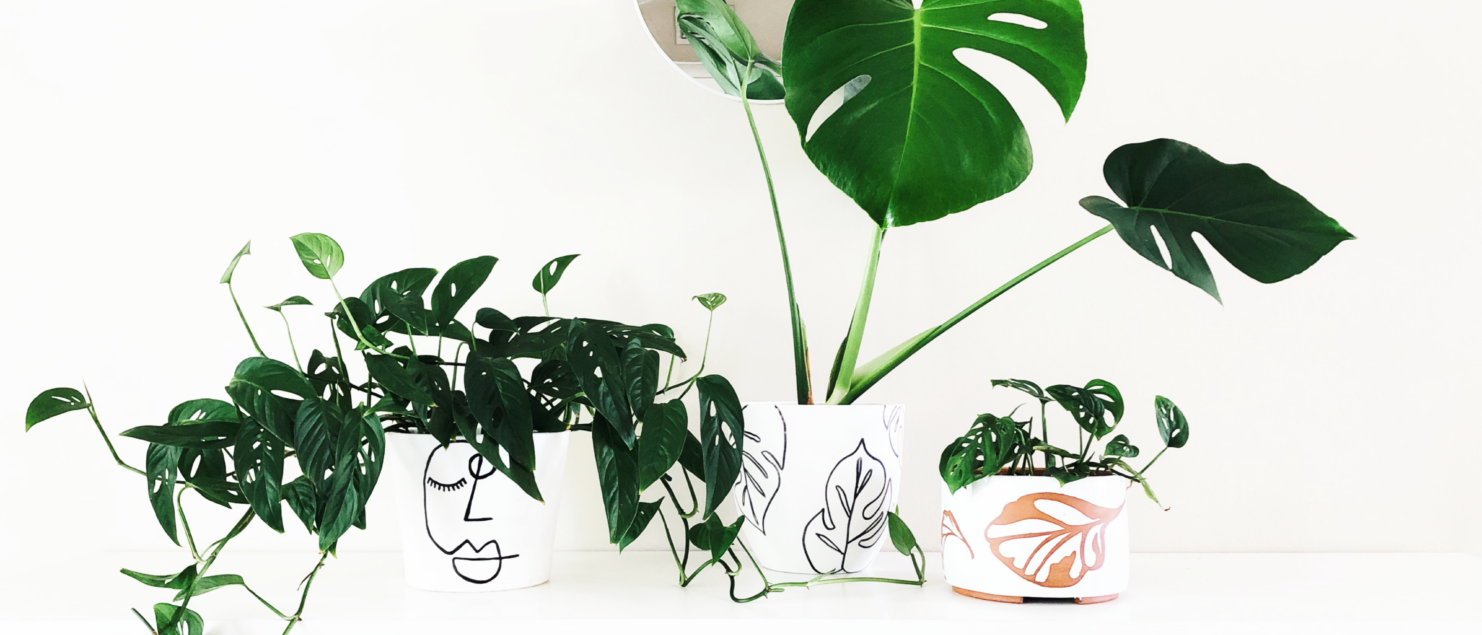Why Houseplants Create Leaf Holes
Not only does my family comment on the holes in my jeans – they also comment on the holes in my houseplants.
“Looks like a bug ate your plant!” or “Is this supposed to look like this?”.

I mean, they’re not wrong when asking or stating this. To be honest, a holey plant can look kinda strange to the non-plant collector.
But, there’s bigger reasons behind this phenomenon – so, sit back and let me give you the (w)hole truth behind why houseplants create leaf holes.
Holy Plants, Batman!
The term plants have when they make holes, splits, or even transparent parts in their leaves is called fenestrations.
These are unique markings are most commonly recognized varieties of Monstera, with the staple plant being the Monstera Delicousa with its famous splits and holes. Another Monstera – the Monstera Adansonii or the “swiss cheese plant”, will defiantly help you paint a good picture of what fenestrations can look like with its random holey leaf pattern.

These fenestrations are also present in plants like the bird of paradise, in the form of splits. When looking at a bird of paradise plant you might think that the plant is torn from damage or neglect, but it’s most commonly caused by fenestration.
Fenestrate Debate
There’s a big debate in the plant world on why houseplants create leaf holes. Due to the fact that most Monsteras are climbers, one theory is that these plants create fenestrations to allow water to pass through the leaves. This helps the plant receive some water at the roots, instead of having the leaves completely block it out.

Other people think these holes develop for wind flow. Most plants that create holes and splits are native to Mexico and places that are prone to getting bad storms, such as hurricanes. This is commonly speculated in why the bird of paradise split. The bigger the leaves, the more wind resistant they are.
This can cause serious damage to the plant.

The last fenestration theory is that since most plants that develop holes are vining plants. These plants are commonly native to the floors of the rainforest. So, with that being said they only receive filtered sunlight through the trees. Some believe that the holes and splits are developed in order to give the bottom leaves the most sunlight they can. If the plant doesn’t create fenestrations, the leaves would just completely block out the light.
This theory makes sense since fenestrations don’t form until the plant becomes more mature. So, the bigger the plant gets, the bigger the leaves get, and the more fenestrations develop.
Take one of my monsteras for instance (pictured below). The older the leaf the more fenestration.
The leaf that is labeled #1 is the oldest leaf going all the way up to the leaf labeled #4. Which is a leaf that just unfurled. Notice the amount of holes and splits this plant gets as it gets older.

But why can’t they all be right?
If you think about it, nature is pretty interesting and so smart, that it can adjust accordingly to its surroundings. Through many generations, these plants learned to adapt to their environment as best as they could and I think regardless the reason, that’s pretty impressive.
Hole-lotta Love
Anyone who has a plant capable of spitting or creating holes, wants them. Getting your houseplant to split indoors can be challenging at times.
Giving the plant the right conditions will defiantly help.

If you’re trying to get those famous fenestrations theres a few things you can try:
Give it time
This is probably something everyone in the fenestrate debate can all agree on. Plants like the Monstera Deliciousa need to be around 3 feet tall or have at least 3-5 leaves on each main stem before you start to see any action. But the biggest rule when it comes to getting your plant to fenestrate is maturity. Only mature plants will create those sought after holes and spits.
Move your plant closer to brighter lighting
Not all plants enjoy direct light, but if you have a mature plant that is still giving you bigger and bigger leaves with nothing. Move it a little closer to a brighter area, or even under some growlights. Plants like Monteras and Pothos like a medium bright light.
Give your plant something to climb or grab onto
Most of the time, you’ll find that plants that fenestrate, are climbers. Giving them something to climb on will help produce larger leaves. I have actually witnessed this personally and had others do it as well, with success.
Often times pruning off older/smaller leaves helps to essentially make room for larger ones.
Famous Fenestrations
Although we don’t really know exactly why plants create holes and splits in their leaves, we can always just admire their striking beauty and will be the envy of all your neighbors…
Just kidding about that one, unless you have a neighbor who can’t get their monstera to fenestrate.

Once you get your houseplant holey/splitting – you’ll have a very trendy looking staple in your home décor and you’ll be able to tell your family that holes are cool – on your p(l)ants.
Did this help you understand why houseplants create leaf holes? What holey houseplants do you have?
Not enough Light in your home for your plant to fenestrate?
Check out my Grow Light Guide For Houseplants to give help promote those holes!

